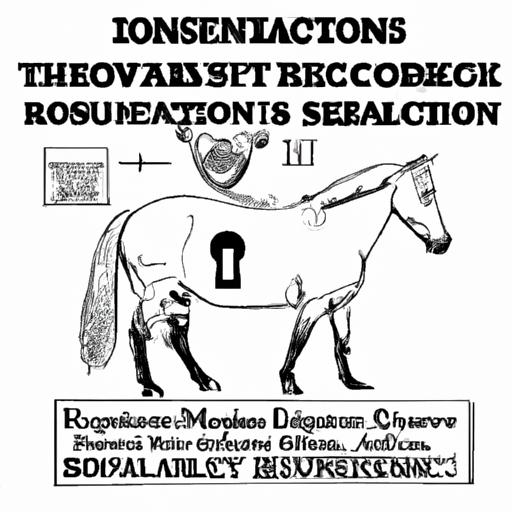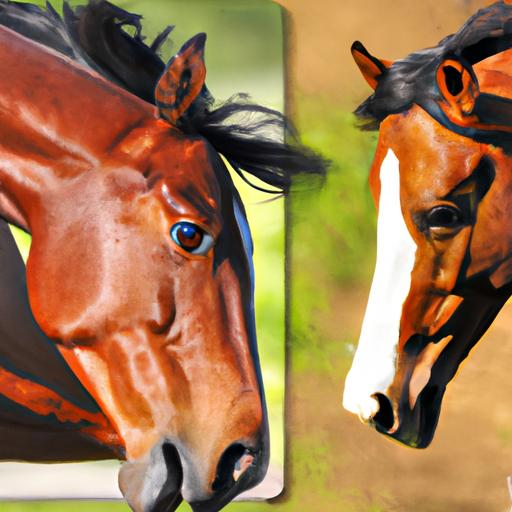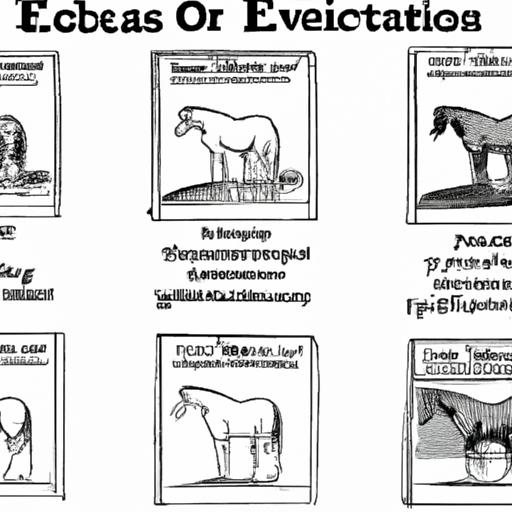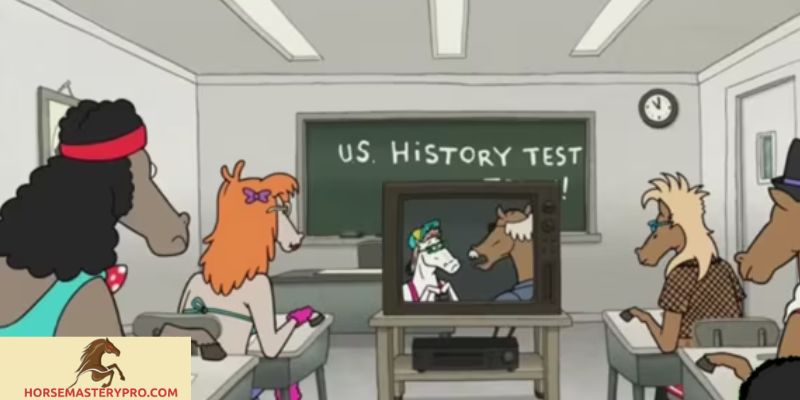Unlock the secrets of equine excellence with the regular show horse history test. Explore its evolution, impact on competitions, and historical background.
Introduction

Have you ever wondered what sets apart a champion horse from the rest? In the world of equestrian competitions, the Regular Show Horse History Test plays a pivotal role in identifying the true stars of the arena. By delving into a horse’s performance history, this test provides invaluable insights into their abilities, strengths, and potential.
Why is the Regular Show Horse History Test so crucial in equestrian competitions? Well, it serves as a powerful tool to evaluate a horse’s competence and determine their readiness to compete at higher levels. This test allows judges, riders, and trainers to gain a comprehensive understanding of a horse’s past achievements, enabling them to make informed decisions for future competitions.
Overview of Regular Show Horse History Test

Before we dive deeper, let’s take a moment to understand what the Regular Show Horse History Test entails. This test assesses a horse’s previous show ring performances, taking into account factors such as their consistency, versatility, and overall success. It focuses on evaluating the horse’s performance across various disciplines, including dressage, jumping, and equitation.
During the Regular Show Horse History Test, judges analyze the horse’s competition records, considering factors such as the level of competition, number of wins, and overall placement. They also examine the horse’s consistency in delivering exceptional performances, as well as their adaptability across different arenas and conditions.
As a rider or trainer, participating in the Regular Show Horse History Test offers a unique opportunity to showcase your horse’s capabilities and demonstrate their potential for future success. It serves as a platform to highlight their achievements and set them on a path towards greater recognition and opportunities.
In the upcoming sections, we will explore the evolution of the Regular Show Horse History Test, its importance in equestrian competitions, and how you can prepare your horse to excel in this evaluation. So, saddle up and join me on this exciting journey to unlock the secrets behind equine excellence!
Stay tuned for Section II, where we’ll delve into the understanding of the Regular Show Horse History Test and its purpose.
Understanding Regular Show Horse History Test

Definition and Purpose of Regular Show Horse History Test
The Regular Show Horse History Test is a comprehensive evaluation method used in equestrian competitions to assess a horse’s performance history. It involves analyzing the horse’s previous show ring performances, taking into account their achievements, consistency, versatility, and overall success. This test aims to provide a holistic view of the horse’s capabilities and potential for future competitions.
Role of Regular Show Horse History Test in Evaluating Horse Competence
The Regular Show Horse History Test plays a crucial role in evaluating a horse’s competence and suitability for higher-level competitions. By examining the horse’s performance records, judges can gain insights into the horse’s strengths, weaknesses, and overall level of skill. This evaluation helps to identify horses that have consistently performed well, showcasing their ability to handle the demands of competitive riding.
Moreover, the Regular Show Horse History Test serves as a valuable tool for riders and trainers. It allows them to assess their horse’s progress over time and make informed decisions regarding training strategies, competition selection, and future goals. By understanding the horse’s past performances, they can tailor their training methods to enhance the horse’s strengths and address any areas that need improvement.
Requirements and Guidelines for Regular Show Horse History Test
To participate in the Regular Show Horse History Test, there are certain requirements and guidelines that riders and horses must adhere to. These may vary depending on the specific competition or organization conducting the test. Generally, participants need to provide accurate and comprehensive records of their horse’s show ring performances, including details such as competition dates, disciplines, levels, and results.
It is essential to ensure the authenticity and accuracy of the provided information, as any discrepancies could impact the evaluation process. Additionally, riders and trainers should familiarize themselves with the specific guidelines and criteria set by the organizing body to ensure compliance and fairness.
In the next section, we will explore the evolution of the Regular Show Horse History Test and how it has evolved over time to become a vital component of equestrian competitions. Get ready to uncover the fascinating journey behind this evaluation method!
Stay tuned for Section III, where we’ll delve into the evolution of the Regular Show Horse History Test.
Section III: Evolution of Regular Show Horse History Test
Historical Background of Regular Show Horse History Test
To truly appreciate the significance of the Regular Show Horse History Test, we must delve into its historical roots. This evaluation method emerged as a response to the need for a comprehensive assessment of a horse’s performance capabilities. It originated from the desire to create a standardized process that would enable fair comparisons and evaluations in equestrian competitions.
Development and Evolution of Test Format over Time
Over the years, the Regular Show Horse History Test has undergone significant development and evolution. Initially, it focused solely on evaluating a horse’s show ring performances in a specific discipline. However, recognizing the importance of versatility, the test format expanded to encompass multiple disciplines. This expansion allowed horses to showcase their adaptability and skills across various arenas.
Furthermore, the test format has adapted to reflect the changing dynamics of equestrian competitions. With advancements in technology, the Regular Show Horse History Test now incorporates digital platforms, making it easier to access and analyze a horse’s performance history. This digital evolution has streamlined the evaluation process, providing more accurate and efficient results.
Impact of Regular Show Horse History Test on Equestrian Competitions
The Regular Show Horse History Test has had a profound impact on equestrian competitions. It has revolutionized the way horses are evaluated and positioned within the industry. By considering a horse’s performance history, this test provides a fair and objective assessment, ensuring that the most deserving horses receive recognition.
Moreover, the Regular Show Horse History Test has created opportunities for riders and trainers to showcase their horses’ abilities. It serves as a platform to highlight their achievements and potential, attracting attention from potential buyers, sponsors, and even international competitions.
In the next section, we will explore the importance of the Regular Show Horse History Test in evaluating a horse’s performance history and the benefits it brings to riders and trainers. So, let’s continue our journey to unveil the secrets behind this valuable evaluation method!
Stay tuned for Section IV, where we’ll delve into the importance of the Regular Show Horse History Test and its benefits for riders and trainers.
Preparation for Regular Show Horse History Test
Training Techniques to Improve Horse Performance History
When it comes to preparing for the Regular Show Horse History Test, training techniques play a crucial role in enhancing your horse’s performance history. Consistency, discipline, and a tailored training regimen are key to unlocking your horse’s full potential.
To improve your horse’s performance history, focus on refining their skills in the specific disciplines relevant to the test. Whether it’s dressage, jumping, or equitation, prioritize targeted exercises that strengthen your horse’s abilities in these areas. Work closely with a skilled trainer who can guide you through specialized training techniques tailored to your horse’s needs.
Importance of Consistent Practice and Conditioning
Consistent practice is essential for horses participating in the Regular Show Horse History Test. Just like athletes, horses need regular exercise and conditioning to maintain peak performance. Establish a training schedule that includes a balanced mix of groundwork, flatwork, and jumping exercises.
Incorporate variety into your training sessions to keep your horse engaged and motivated. Introduce new challenges, such as different jump heights or complex dressage movements, to expand their skillset. Regularly assess their progress and adjust your training plan accordingly to address any weaknesses or areas for improvement.
Additionally, ensure your horse receives proper conditioning to build stamina and endurance. Gradually increase the intensity and duration of their workouts to develop their physical fitness. Proper nutrition, rest, and regular veterinary care are also crucial in maintaining your horse’s overall health and well-being.
Strategies to Enhance Horse’s Performance in Regular Show Horse History Test
To enhance your horse’s performance in the Regular Show Horse History Test, consider implementing the following strategies:
- Set Clear Goals: Define specific performance goals for your horse in each discipline and work towards achieving them. Breaking down larger goals into smaller milestones allows for measurable progress and boosts motivation.
- Mindful Warm-ups: Prioritize warm-up exercises to prepare your horse physically and mentally for the test. Incorporate stretching, suppling exercises, and transitions to ensure they are focused and responsive.
- Mental Preparation: Practice exposing your horse to different environments, distractions, and competition-like scenarios. This helps them develop confidence, adaptability, and resilience, ultimately improving their performance in the test.
Remember, success in the Regular Show Horse History Test stems from consistent training, careful preparation, and a strong partnership between horse and rider. By implementing these strategies, you’ll be well on your way to unlocking your horse’s full potential in this evaluation.
Stay tuned for Section VI, where we’ll conclude our exploration of the Regular Show Horse History Test and its significance in equestrian competitions.
Conclusion
As we conclude our exploration of the Regular Show Horse History Test, it is evident that this evaluation holds remarkable significance in the world of equestrian competitions. By delving into a horse’s performance history, this test provides invaluable insights into their abilities, strengths, and potential.
The Regular Show Horse History Test plays a crucial role in evaluating a horse’s competence and determining their readiness for higher-level competitions. It allows judges, riders, and trainers to gain a comprehensive understanding of a horse’s past achievements, enabling them to make informed decisions for future competitions. This test serves as a powerful tool to identify the true stars of the arena and sets apart champion horses from the rest.
Throughout its evolution, the Regular Show Horse History Test has undergone significant changes in its format and requirements. From its historical background to the development of more comprehensive evaluation methods, this test continues to evolve to better serve the equestrian community. Its impact on equestrian competitions cannot be overstated, as it helps maintain fairness, accuracy, and transparency in assessing equine excellence.
If you aspire to participate in equestrian competitions and aim for success, it is essential to recognize the importance of the Regular Show Horse History Test. By preparing your horse diligently, focusing on consistent training and conditioning, you can enhance their performance in this evaluation and increase their chances of recognition and future opportunities.
At Horsemasterypro.com, we understand the significance of the Regular Show Horse History Test and its role in shaping the equestrian landscape. We encourage you to embrace this evaluation as a means to showcase your horse’s abilities and unlock their true potential. Join us in the pursuit of equine excellence and let your horse’s history speak volumes in the world of equestrian competitions.
Thank you for joining me on this captivating journey through the Regular Show Horse History Test. Stay tuned for more insights and tips from Horsemasterypro.com!


